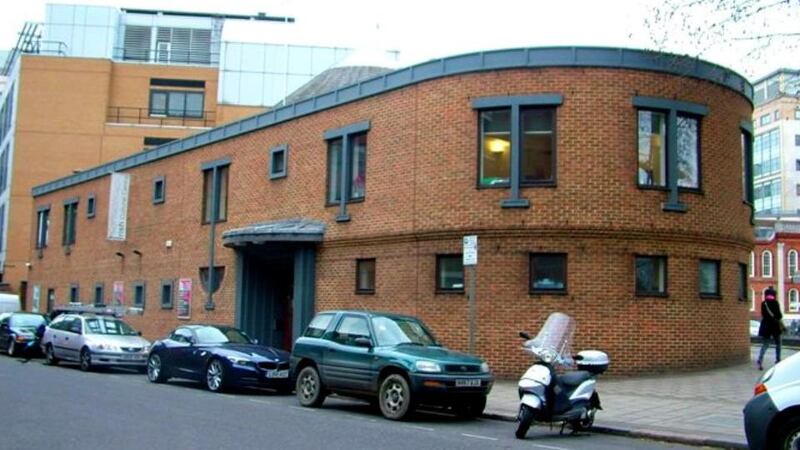The building that housed until recently the Irish Cultural Centre in Hammersmith in London was less than 20 years old; but it was tired long before the bulldozers and diggers arrived recently to dispatch it into history.
Inside it was filled with a bare auditorium that needed plastic chairs put out each time an event was held; along with narrow, often gloomy corridors. Despite its imperfections, it was frequently the home of dreams.
By Easter 2015, all being well, a new light-filled creation will emerge on Black’s Road, the work of years of effort by a dedicated, and too often unsung group of volunteers, led by the Belfast-born chairman, Jim O’Hara.

Three years ago the future looked bleak for the centre. In February 2011, its landlord, the Conservative-controlled Hammersmith and Fulham borough council announced it was selling the property.
Eight buildings needed to go in the borough, including Fulham Town Hall if the council was to raise £14 million – the move was necessary since Hammersmith and Fulham were paying £5 million a year in interest charges to service a £130 million debt.
The decision prompted fury in some quarters, with anger visible in the public gallery during council meetings, though Conservative councillors insisted they were willing to help the centre to buy the freehold.
However, the £1.5 million price seemed an impossible mountain to climb. In the end, however, some imagination, along with some shrewd lobbying of the Irish Government , helped. In November, 2012, a deal was struck.
Ministers in Dublin approved a £500,000 contribution, “which was not easy for them to do, to be fair, given the climate that there was at home, so they deserve credit for that”, O’Hara, the head of the Irish Studies Centre at St Mary’s University College in Twickenham, acknowledges.
Under the plan, the centre would work with the Shepherd’s Bush Housing Group, a 45-year-old housing association which has 5,000 houses in West London, in a project that would see the centre take two floors in a seven-storey replacement.
Unusually, the centre would own the freehold of the new building – a rare boon in a city where property prices are increasingly becoming divorced from anything that happens elsewhere in Britain. In turn, the housing association would have 24 flats on the higher floors.
“We have bought the freehold without going to the Irish community. We will get the building up without going to the Irish community. So far, the Irish community hasn’t been asked. We have achieved quite a lot without people being asked.
“Now is the time for people to help,” says the music-loving O’Hara, who points out that nearly every other country sees the cultural and commercial benefits of having a having a cultural centre in an increasingly-globalised city.
This month, a fund-raising campaign is getting underway with a target of £500,000. The money will be spent on fitting-out the new centre, installing audio-visual and interactive equipment in the auditorium/theatre, along with equipping the bar and offices.
For years, the centre has played a significant role in passing on Irish culture to a generation of London-born Irish; those who came in earlier years and who have started to come again since Ireland’s economic woes returned.
Each week, dozens of young people studied with tutors, such as Brendan Mulkere and Irish step-dancing instructor, Corinne Delaney, who figured repeatedly in the top rankings of dancers who competed in the North American national finals.
However, there were some who never went, or who did not go as often as they might because the surroundings did not appeal: “It served a purpose for a while. It was showing signs of wear-and-tear. The new one will be bright, airy, spacious, designed very differently.”
Culture is increasingly important in an ever-more globalised world, while governments now see its value in maintaining ties with diasporas who can play an ever more significant role from afar in the lands that they once called home.
In time, it could prove to be a venue for Irish-linked organisations, business, or otherwise, seeking a place for conferences in central London an occasional home, particularly since the Irish Club, late of Blackfriars, is no more.
"We hope that the younger Irish will be attracted; it will be a social place, not just for arts and culture. It has got to be a building that will encompass the whole Irish community," O'Hara told The Irish Times .
“I would have thought that there was sufficient, interest and pride in the community amongst the wealthy and the not-so-wealthy,” says O’Hara, who plans an Internet campaign to raise “fivers and tenners”, too: “It is a question of everybody buying into it.” See irishculturalcentre.co.uk









